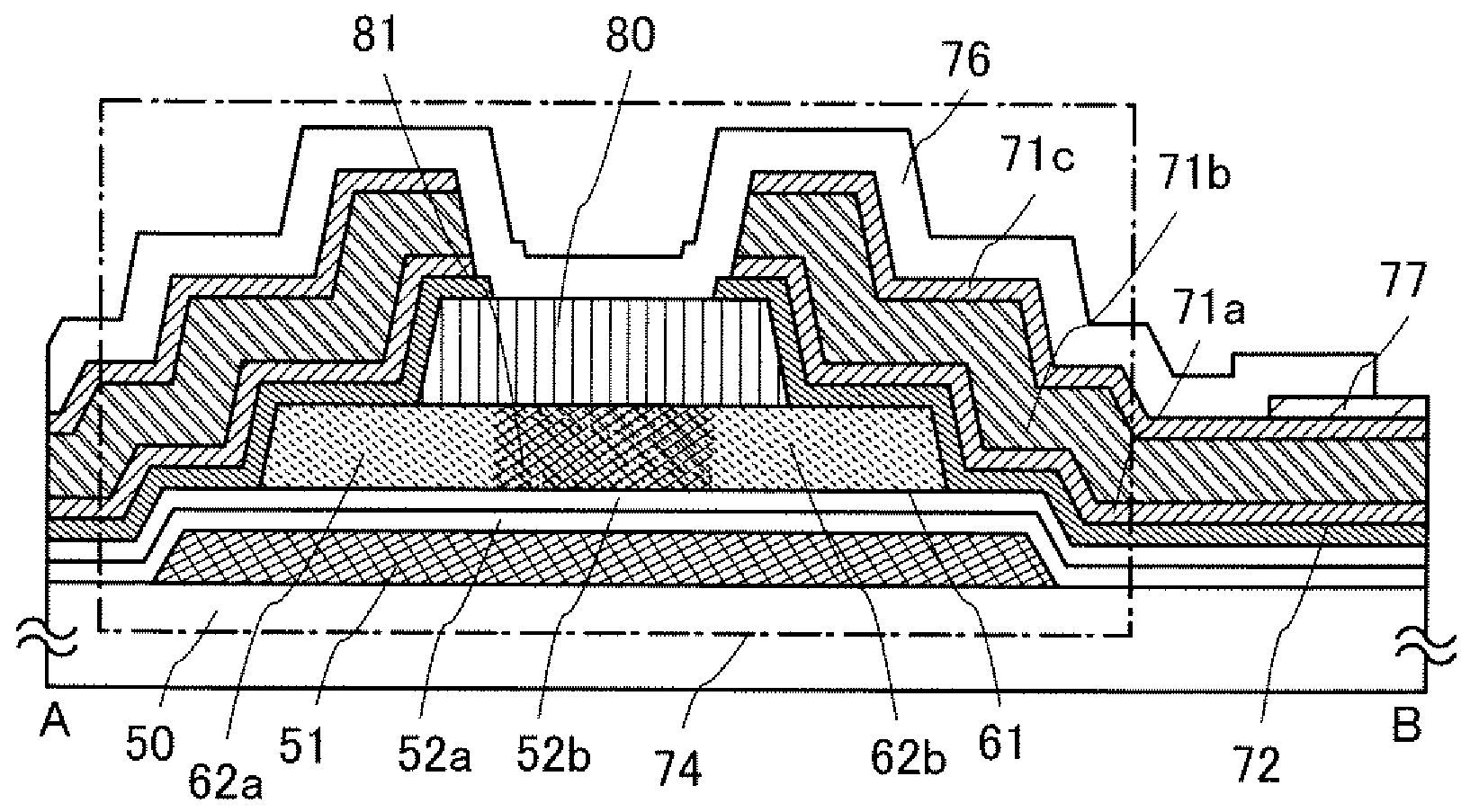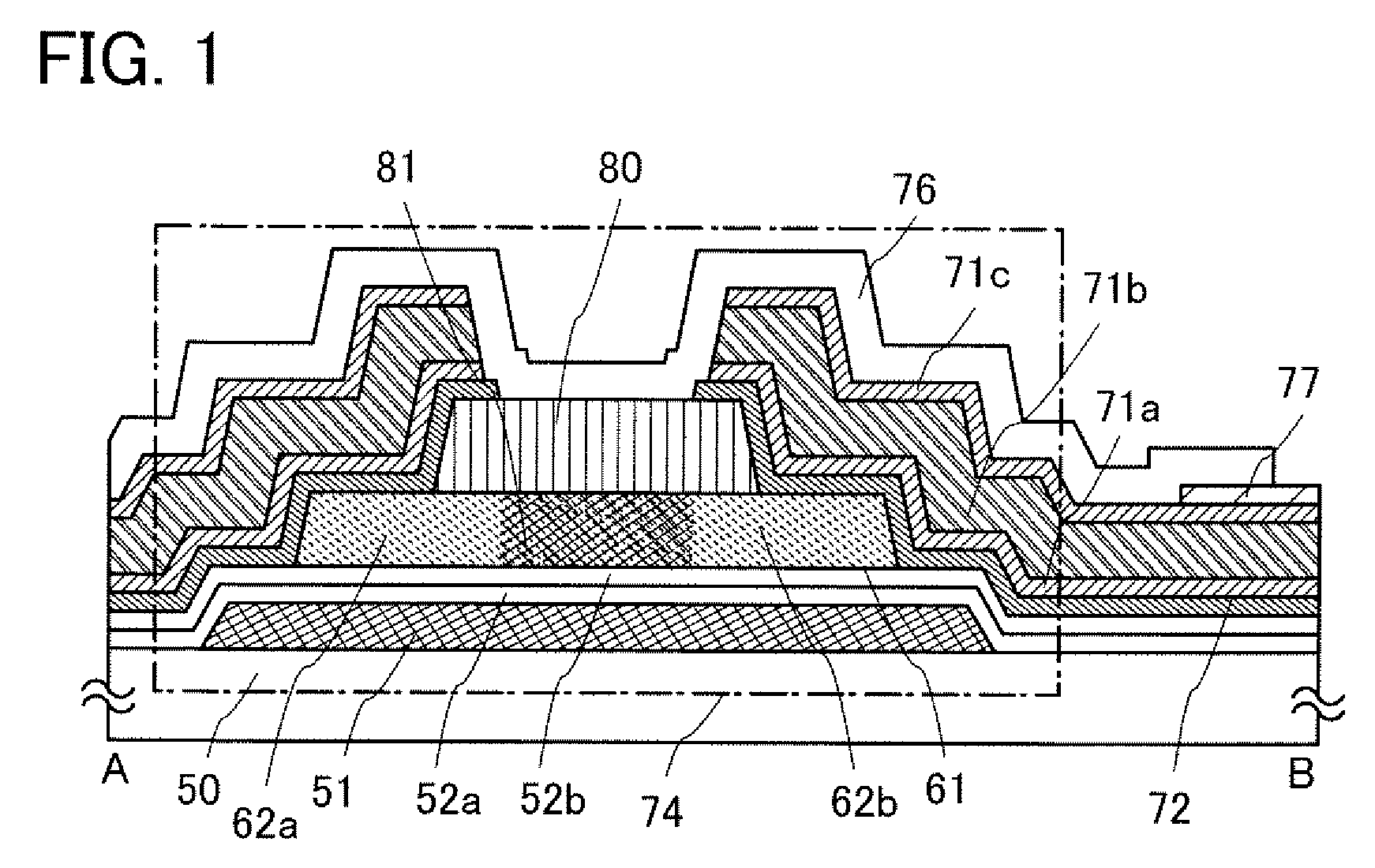Display device and manufacturing method thereof
- Summary
- Abstract
- Description
- Claims
- Application Information
AI Technical Summary
Benefits of technology
Problems solved by technology
Method used
Image
Examples
embodiment modes
[0052]Hereinafter, embodiment modes of the present invention are described in detail with reference to the drawings. Note that the present invention is not limited to the following description7 and it is easily understood by those skilled in the art that the modes and details disclosed herein can be modified in various ways without departing from the spirit and scope of the present invention. Therefore, the present invention should not be interpreted as being limited to the description of the embodiment modes to be given below. In the structures of the present invention to be described hereinafter, same parts or parts having similar functions are denoted by same reference numerals in different drawings, and repeated description thereof is omitted.
embodiment mode 1
[0053]This embodiment mode describes a thin film transistor used in a display device and a method for manufacturing the thin film transistor, with reference to FIG. 1, FIGS. 2A to 2E, FIGS. 3A to 3C, and FIGS. 4A to 4D. FIG. 1, FIGS. 2A to 2E, and FIGS. 3A to 3C are cross-sectional views showing a thin film transistor and a manufacturing method thereof, and FIGS. 4A to 4D are plan views of a region in which a thin film transistor and a pixel electrode are connected to each other in a pixel. FIG. 1, FIGS. 2A to 2E, and FIGS. 3A to 3C are cross-sectional views showing the thin film transistor taken along a line A-B in FIGS. 4A to 4D and a manufacturing method thereof.
[0054]With regard to a thin film transistor including a microcrystalline semiconductor film, an n-channel thin film transistor has higher mobility than a p-channel thin film transistor, and thus the former is more suitable for a driver circuit. However, either an n-channel or p-channel thin film transistor may be used in ...
embodiment mode 2
[0120]This embodiment mode presents another example in which a thin film transistor has a different shape from that in Embodiment Mode 1. Therefore, parts except for a different part can be made in a similar manner to Embodiment Mode 1, and the same parts or parts having similar functions, or steps for making such parts are not repeatedly described.
[0121]This embodiment mode describes a thin film transistor used in a display device and a method for manufacturing the thin film transistor, with reference to FIG. 5, FIGS. 6A to 6D, and FIG. 15. FIG. 5 and FIG. 15 are cross-sectional views of a thin film transistor and a pixel electrode, and FIGS. 6A to 6D are plan views of a region in which a thin film transistor and a pixel electrode are connected to each other in a pixel. FIG. 5 and FIG. 15 are cross-sectional views showing thin film transistors taken along a line Q-R in FIGS. 6A to 6D and manufacturing steps thereof.
[0122]A channel stop (also referred to as “channel protective”) thi...
PUM
 Login to View More
Login to View More Abstract
Description
Claims
Application Information
 Login to View More
Login to View More - R&D
- Intellectual Property
- Life Sciences
- Materials
- Tech Scout
- Unparalleled Data Quality
- Higher Quality Content
- 60% Fewer Hallucinations
Browse by: Latest US Patents, China's latest patents, Technical Efficacy Thesaurus, Application Domain, Technology Topic, Popular Technical Reports.
© 2025 PatSnap. All rights reserved.Legal|Privacy policy|Modern Slavery Act Transparency Statement|Sitemap|About US| Contact US: help@patsnap.com



